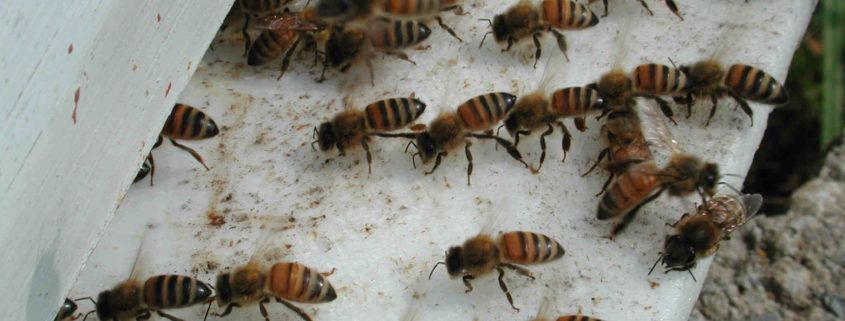The Hive Tool
It is hard to imagine a tool that is so simple and elegant in design, yet so effective for so many tasks. Whether a beekeeper works in their backyard with one or two colonies, or inside an orchard with hundreds of colonies on pallets, the humble hive tool is the indispensable and loyal friend of every beekeeper, beginner or advanced.
The main functions of the hive tool are to provide leverage in opening colonies, to scrape, and to hook. Using a hive tool as a lever is obvious. A beekeeper regularly needs to pry apart heavy boxes that often are glued together with sticky wax and propolis. A sturdy hive tool fits between the boxes while the beekeeper pushes down on the other end, thus opening even the heaviest of boxes with surprisingly little effort.
Scraping is another task that a beekeeper seems to perform all of the time. Lids need to be scraped free of wax, and tops of frames need to be cleared of burr comb. Bottom boards often need to be scraped of debris. Also, smokers need to be scraped of carbon. Who knew that beekeeping involves so much scraping? Thank goodness for the trusty hive tool.
Each hive tool also features a hole near the top that can be used to pry loose nails. At Wildflower Meadows, we’ve also used our hive tools as makeshift hammers when real hammers cannot be found.
Hive tools usually come in bright colors, so that they be found easily. When a beekeeper misplaces his hive tool, it feels like misplacing a phone or set of keys. Anxiety sets in right away. A best practice for a beekeeper is to learn to work with a hive tool always in hand or in pocket, so that it is never set down to be misplaced. There is no worse feeling then just beginning to work a bee yard and misplacing your trusty and hardworking hive tool!












